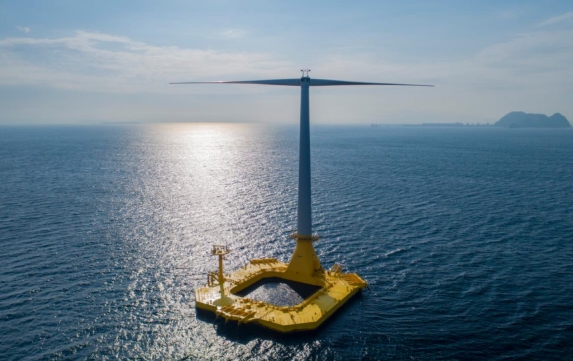
The bill has been well-received by the renewable energy sector, particularly for its potential to support floating wind technology in Japan’s deepwater coastal regions. Rebecca Williams, Deputy CEO of the Global Wind Energy Council, stated: “This is great news. Congratulations to the Ministry of Economy, Trade and Industry and the Japanese Government for making this possible. Scaling up floating wind is important for increasing Japan’s energy autonomy and resilience, and represents an important global industrial opportunity.”
According to 2024 preliminary data from the Japan Wind Power Association, Japan’s wind energy capacity totals 5,840.4 MW, including 253.4 MW from offshore projects. Currently, the country operates seven offshore wind projects, with two utilizing floating wind technology: the 2 MW Sakiyama floating wind turbine and the 3 MW Hibiki floater, both single-turbine demonstration projects.
The new legislation aligns with Japan’s renewable energy goals, targeting 10 GW of offshore wind capacity by 2030 and 30-45 GW by 2040, including floating wind projects. These efforts support the country’s broader objective of achieving net-zero emissions by 2050. The expansion into the EEZ is expected to enhance Japan’s energy independence and contribute to sustainable industrial growth.
By enabling access to deeper waters, the bill facilitates the development of advanced offshore wind technologies, positioning Japan as a key player in the global renewable energy market. The government’s collaboration with industry stakeholders, as noted by Williams, underscores its commitment to building a robust offshore wind sector to meet future energy demands sustainably.